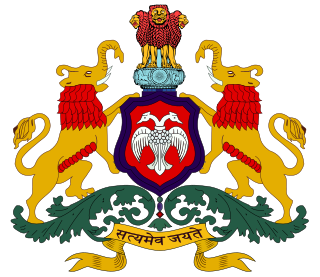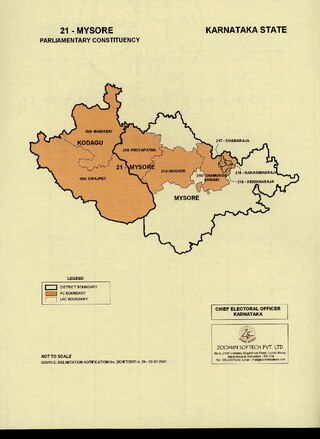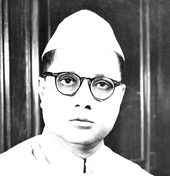Related Research Articles

Belgaum is a city in the Indian state of Karnataka located in its northern part along the Western Ghats. It is the administrative headquarters of the eponymous Belagavi division and Belagavi district. The Government of Karnataka has proposed making Belgaum the second capital of Karnataka alongside Bangalore, hence a second state administrative building Suvarna Vidhana Soudha was inaugurated on 11 October 2012.

Mysore State, colloquially Old Mysore, was a political territory within the Dominion of India and the subsequent Republic of India from 1947 until 1956. The state was formed by renaming the Kingdom of Mysore, and Bangalore replaced Mysore as the state's capital. When Parliament passed the States Reorganisation Act in 1956, Mysore State was considerably enlarged when it became a linguistically homogeneous Kannada-speaking state within the Republic of India by incorporating territories from Andhra, Bombay, Coorg, Hyderabad, and Madras States, as well as other petty fiefdoms. It was subsequently renamed Karnataka in 1973.

The Government of Karnataka, abbreviated as GoK or GOKA, or simply Karnataka Government, formerly Government of Mysore or Government of Mysore State is a democratically elected state body with the governor as the ceremonial head to govern the Southwest Indian state of Karnataka. The governor who is appointed for five years appoints the chief minister and on the advice of the chief minister appoints their council of ministers. Even though the governor remains the ceremonial head of the state, the day-to-day running of the government is taken care of by the chief minister and their council of ministers in whom a great amount of legislative powers are vested.

Jagadish Shivappa Shettar is an Indian politician, who served as the 15th Chief Minister of Karnataka from 2012 to 2013. He is currently serving as Member of Karnataka Legislative Council. He has subsequently served as Leader of the Opposition in the Karnataka Legislative Assembly. He also served as the Speaker of the Karnataka Legislative Assembly during 2008–2009. He is a member of the Bharatiya Janata Party. Earlier in 2023 he had joined the Indian National Congress, where he quit the BJP on being denied the MLA ticket in 2023. He represented Hubli-Dharwad Central Vidhan Sabha seat, which he resigned in 2023 before the elections. In March 2024, he was announced as the BJP candidate from the Belgaum Constituency for the 2024 Lok Sabha Elections.
The Karnataka Vidyavardhaka Sangha was an institution established on 20 July 1890 by Sri R H Deshpande in Dharwad, India which was then under the British rule of Bombay Presidency. This institution was established with the sole objective of promoting Kannada culture and language in times when the Kannada speaking regions of present-day Karnataka were split into six different areas, where Kannada was often overshadowed by other languages. Soon the Sangha morphed into a hub for the Karnataka Ekikarana (Unification) movement and played a pivotal role in the eventual unification of Karnataka. It inspired the establishment of several institutions and organisations across the state. For its invaluable services and contributions to Kannada and Karnataka, this institution was awarded the Ekikarana Award by the Government of Karnataka on the occasion of the 50th year celebrations of Karnataka state in 2006.

Dinakara Desai was a poet, writer, educationist, and political activist. He was famous for his poetry form called chutuka. Chutuka or chutuku is a quadraplet poem. This format was later adopted by other poets. He made major contributions towards the literary development of the Uttara Kannada district of Karnataka.

Mysore Lok Sabha Constituency is one of the 28 Lok Sabha constituencies in Karnataka.
Udupi Lok Sabha constituency was a former Lok Sabha constituency in Karnataka. This seat came into existence in 1957. With the implementation of the delimitation of parliamentary constituencies in 2008, it ceased to exist.
Tonk–Sawai Madhopur is one of the 25 Lok Sabha (parliamentary) constituencies in Rajasthan state in western India. This constituency came into existence in 2008 as a part of the implementation of delimitation of parliamentary constituencies.
Mangalore Lok Sabha constituency was one of the Lok Sabha constituencies in Karnataka state in southern India. With the implementation of the delimitation of parliamentary constituencies in 2008, based on the recommendations of the Delimitation Commission of India constituted in 2002, this constituency ceased to exist.

Elections to the Legislative Assembly of the Indian state of Mysore were held on 26 March 1952. 394 candidates contested for 99 seats in 80 constituencies in the Assembly. There were 19 two-member constituencies and 61 single-member constituencies, accounting for 99 seats.
South Kanara (South) Lok Sabha constituency was a former Lok Sabha constituency in Madras State. This seat came into existence in 1951. With the implementation of States Reorganisation Act, 1956, it ceased to exist.
Bijapur North Lok Sabha constituency was a former Lok Sabha constituency in Karnataka. This seat came into existence in 1951. Before 1967 Lok Sabha Elections, it ceased to exist.
Bijapur South Lok Sabha constituency was a former Lok Sabha constituency in Karnataka. This seat came into existence in 1951. Before 1967 Lok Sabha Elections, it ceased to exist.
Belgaum North Lok Sabha constituency was a Lok Sabha constituency in Bombay State. This seat came into existence in 1951. With the implementation of States Reorganisation Act, 1956, it ceased to exist.
Belgaum South Lok Sabha constituency was a Lok Sabha constituency in Bombay State. This seat came into existence in 1951. With the implementation of States Reorganisation Act, 1956, it ceased to exist.
Hebbal may refer to several places in Karnataka, India:
References
- 1 2 3 "STATISTICAL REPORT ON GENERAL ELECTIONS, 1951 TO THE FIRST LOK SABHA" (PDF). The Election Commission of India. p. 92.
- ↑ "Delimitation notification comes into effect". The Hindu . February 20, 2008. Archived from the original on February 28, 2008.
- ↑ "DELIMITATION OF PARLIAMENTARY AND ASSEMBLY CONSTITUENCIES ORDER, 2008" (PDF). Election Commission of India, NIRVACHAN SADAN, ASHOKA ROAD, NEW DELHI-110001.
- ↑ "Anglo Indian Representation To Lok Sabha, State Assemblies Done Away; SC-ST Reservation Extended For 10 Years: Constitution (104th Amendment) Act To Come Into Force On 25th Jan". www.livelaw.in. Retrieved 25 January 2020.
- ↑ "Anglo Indian Members of Parliament (MPs) of India - Powers, Salary, Eligibility, Term". www.elections.in.